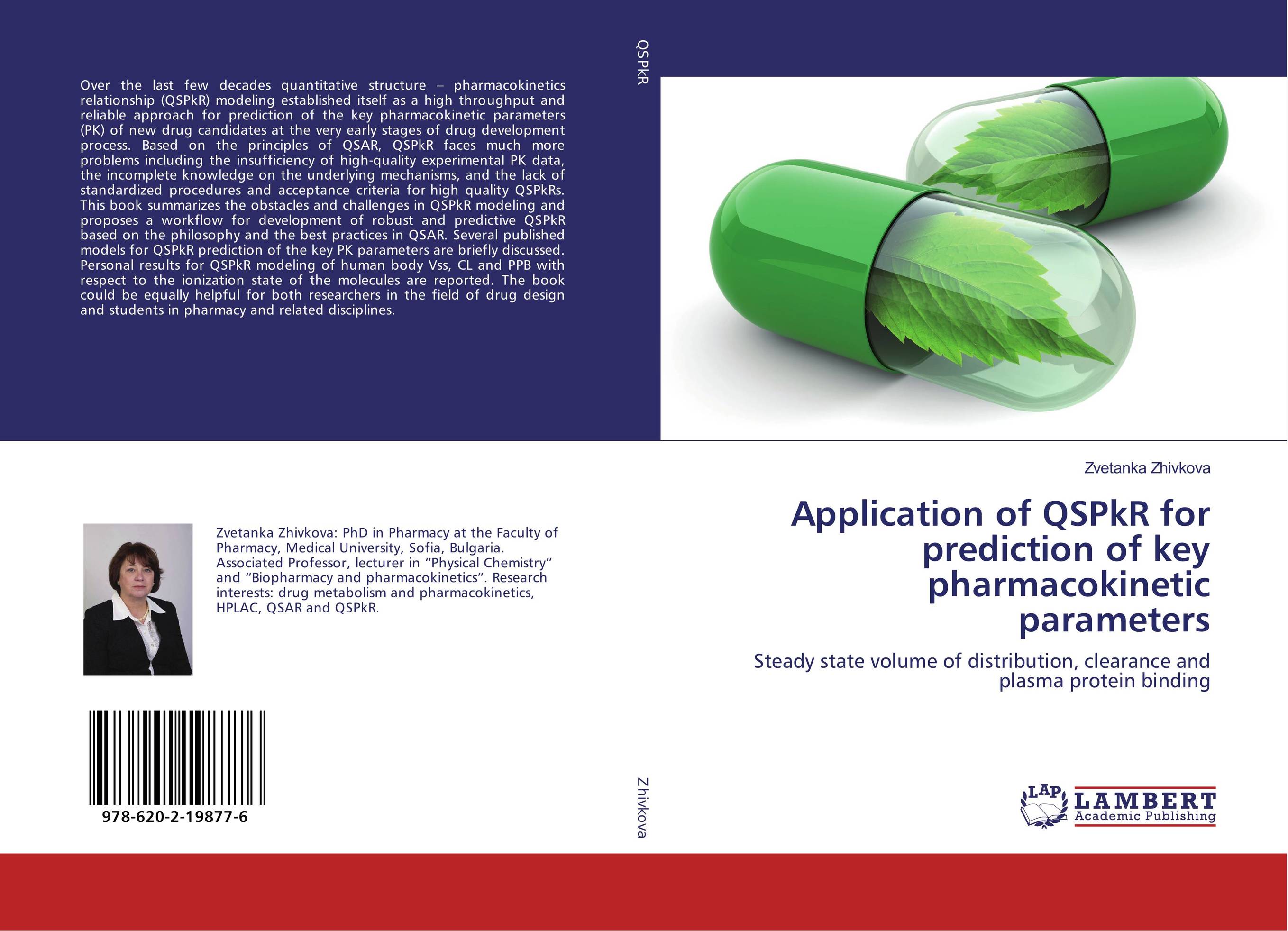| Поиск по каталогу |
|
(строгое соответствие)
|
- Профессиональная
- Научно-популярная
- Художественная
- Публицистика
- Детская
- Искусство
- Хобби, семья, дом
- Спорт
- Путеводители
- Блокноты, тетради, открытки
Application of QSPkR for prediction of key pharmacokinetic parameters. Steady state volume of distribution, clearance and plasma protein binding

В наличии
| Местонахождение: Алматы | Состояние экземпляра: новый |

Бумажная
версия
версия
Автор: Zvetanka Zhivkova
ISBN: 9786202198776
Год издания: 2017
Формат книги: 60×90/16 (145×215 мм)
Количество страниц: 136
Издательство: LAP LAMBERT Academic Publishing
Цена: 24456 тг
Положить в корзину
| Способы доставки в город Алматы * комплектация (срок до отгрузки) не более 2 рабочих дней |
| Самовывоз из города Алматы (пункты самовывоза партнёра CDEK) |
| Курьерская доставка CDEK из города Москва |
| Доставка Почтой России из города Москва |
Аннотация: Over the last few decades quantitative structure – pharmacokinetics relationship (QSPkR) modeling established itself as a high throughput and reliable approach for prediction of the key pharmacokinetic parameters (PK) of new drug candidates at the very early stages of drug development process. Based on the principles of QSAR, QSPkR faces much more problems including the insufficiency of high-quality experimental PK data, the incomplete knowledge on the underlying mechanisms, and the lack of standardized procedures and acceptance criteria for high quality QSPkRs. This book summarizes the obstacles and challenges in QSPkR modeling and proposes a workflow for development of robust and predictive QSPkR based on the philosophy and the best practices in QSAR. Several published models for QSPkR prediction of the key PK parameters are briefly discussed. Personal results for QSPkR modeling of human body Vss, CL and PPB with respect to the ionization state of the molecules are reported. The book could be equally helpful for both researchers in the field of drug design and students in pharmacy and related disciplines.
Ключевые слова: pharmacokinetic parameters, QSAR, QSPkR, In silico prediction, ADME prediction



